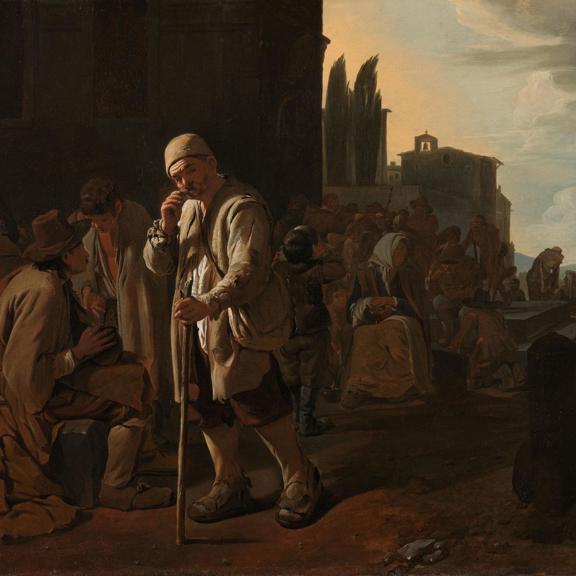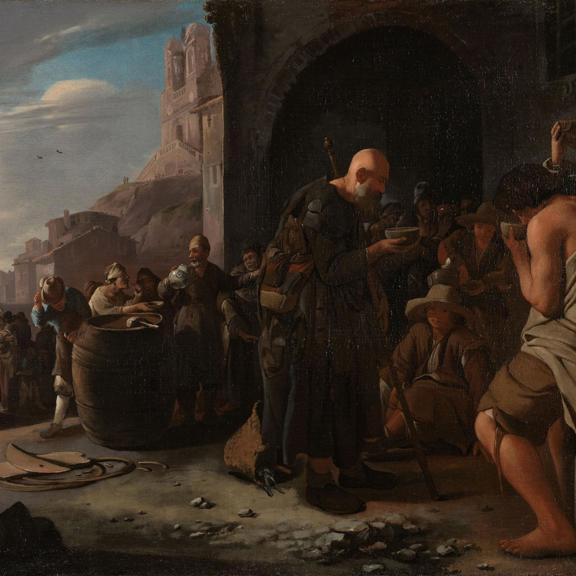Although often seen as Dutch on account of his many connections with the northern Netherlands, Michael Sweerts was in fact a Flemish artist born in Brussels. During his years in Rome between 1646 and about 1654, he developed close ties to Dutch artists and patrons residing in the city, while he briefly lived in Amsterdam later in his life before setting off for his travels to the East as a missionary in 1662. During his time in Rome, Sweerts drew inspiration from the depictions of Roman street life by Pieter van Laer and his followers and the striking interplay of light and darkness in the religious paintings of Caravaggio and his followers. Upon his return to Brussels in 1656, he secured permission from the city authorities to establish a drawing academy.
He was a successful portraitist, a sensitive observer of women and children, of artist’s studios and of Roman daily life. He was also a profoundly religious man. In 1661, after joining a missionary society, Sweerts is recorded as frequently fasting, partaking in communion three or four times a day, and giving away his belongings to the poor. The empathy Sweerts felt towards social problems are evident in his Roman-period paintings depicting the Works of Mercy of the late 1640s. In 1662, Sweerts embarked on a journey to Persia under the mission of Bishop François Pallu. However, in Isfahan he was dismissed because he was deemed ‘not the master of his own mind’. Sweerts made his own way from Iran to India, where he joined the Portuguese Jesuits. He died in Goa in 1664.


